or, THIS PUB CRAWL COULD HAVE BEEN A NOVEL BUT PEOPLE DON’T READ ANYMORE
or, YOU CAN GO HOME AGAIN; YOU JUST HAVE TO DRINK THE ENTIRE TIME
or, simply, CPC GENESIS![]()
By Rob Bellinger
“At the heart of the matter is what it means to be from Queens, a 2.3-million-person slice of New York City that no one beyond its borders knows anything about.”–Invitation to the first College Point Class Conflict Pub Crawl, October 20, 2006
What is the College Point Class Conflict Pub Crawl — CPC for short — and why should you care? Well, it’s an interesting story about an interesting and relatively unknown New York City neighborhood. It has heroes and villains. There’s growth and neglect, hope and despair, evolution and stasis. The CPC deserves its own bildungsroman, or coming-of-age story. This is it.
PART ONE: THE BACKSTORY
First, some words about College Point. It’s a neighborhood in northern Queens. It’s where I grew up, until I was 14 anyway, and went to high school on scholarship in another borough called Manhattan. As I’ve grown fond of saying, there is no college in College Point, nor is there a point. No point to thousands of people living there, anyway. College Point has a great view of Manhattan and LaGuardia Airport, but it’s unreachable by subway. Much of the neighborhood is surrounded by the waters of the East River and Flushing Bay. When I was born, there were four roads into CP. Then Linden Place flooded during a storm, and it still hasn’t reopened. As a result, Forgotten NY calls College Point “the most isolated neighborhood in Queens.”
College Point is cut off from the rest of Queens by the abandoned Flushing Airport. Yes, there’s an abandoned airport in New York City. To this day, the entire runway is still visible, even though it’s underwater. The people to the east of the flooded airport like to say that they enjoy ‘living a suburban life within the City,’ and that their westerly neighbors live in “Garbage Point.”
Just south of the underwater airport isolation barrier lies dizzying downtown Flushing, which looks more like Manhattan than Queens. In the mid-1980s, the arrival of Asian immigrants in Flushing terrified some College Pointers, one “town” over. As more Chinese and Korean businesses opened nearby, many white residents decided to leave the city permanently. Racism will be a recurring theme here. Regional Chinese cuisine enters the story with CPCV.
When I was a kid, in the ’80s, CP was much more industrial than it is today. Within blocks of my brick, semi-attached house were a refrigerator factory, an industrial bakery that made the little breadsticks you get at diners, a defense plant that built underwater minesweepers (my grandmother was a secretary there), a series of massive soda bottling plants, a paint factory, a distribution center for new cars, a wire factory, and countless small machine shops. If you went a little farther there were the rubber factories that the neighborhood had been built around, once staffed by thousands of freshly arrived Germans whose families would stay in CP for generations. Most of those plants would be converted to sweatshops by the time I was born.
If you went past those, you found the sanitation department depot and marine transfer station, cement and oil distribution terminals, and about half a dozen carcinogen-spewing asphalt and concrete plants. College Point was visited by 18-wheelers and barges more often than it was visited by humans, and it was buzzed at all hours of the day by the jet traffic at LaGuardia, which was just across Flushing Bay. When the wind blew out of the west, the whole neighborhood smelled like jet exhaust.
Even though much of College Point was and still is a nice residential neighborhood, those familiar with the geopolitical structure of the United States have probably assumed that the population of 1980’s CP was mostly blue-collar urban white “ethnics.” If you assumed this, you would, of course, be right. This population really, really liked baseball and hockey, not so much football and basketball. If you’re thinking to yourself, “I wonder if he’s implying that the people of College Point disliked the pro sports in which darker-skinned players played in the ’80s,” the answer would be yes.
Baseball, hockey, and racism were the defining characteristics of College Point culture. Shea Stadium towered on the horizon at the end of College Point Boulevard; it lit up majestically whenever there was a night game. The one-lane residential street where I grew up doubled as our ballfield and skating rink. Telephone poles and streetlights served as foul poles, and the brick houses lining the street always kept the ball in play. We played street hockey just like they did in Wayne’s World — imagine Dana Carvey screaming “car!” and skating in with the net. That’s basically what we did, though we used sneakers more often than skates.
One thing I noticed early on was that people only left College Point to go to work, high school, the Roosevelt Field Mall, or Florida. If you were a housewife, retiree, or kid, you were just stuck. As a nerd who had never read a novel, I was bored out of my mind. I studied for an hour a day and had a 98+ average in every subject. I read the yellow pages and made collages of clip art used in the ads. I also read all the food containers in the house and could tell you what Sour Cream ‘n Onion Pringles were made of, yet I ate them by the can and had the gut to prove it. I went to the riverside park with binoculars and figured out everything I could about the passing planes and barges. After my one good friend moved to a “suburban living within the city” kind of place, I had little luck making friends. I hung out with weirdos who would knock on my door and ask things like, “Do you want to go burn stuff?” Then I went away to high school “in the City,” and then I went away to college in Boston, and when I came back to College Point I hated it.
I had zero friends there. I got along with no one, including my parents, who resented that they were spending money to create a son with many opposite political values. I got tired of the neighbors talking about the “niggers, “chinks,” “kooks,” “spics,” and “bananas” moving in. Would you like to hear a true story about CP racism? Fine. There was a [white] guy named Richie at the end of our block. He worked as a plumber or something, and he had a mullet. As soon as his young son could grow enough hair, Richie Jr. sported a matching mullet. During breaks from street baseball, Richie would ask Richie Jr. (and the rest of us) if we wanted to “go around the block and kick some cans.” “What kind of cans,” someone in the crowd would ask. “Puerto Ri-cans, Domini-cans, Mexi-cans..,” Richie would reply. Though I stopped playing street sports well before I started leaving the neighborhood daily, these memories lingered. Coming back from college to the mind-bogglingly racist, faux-conservative, anti-intellectual culture of College Point was like getting kicked in the nuts after an 8-hour bus ride.
After graduating from college, I chose a job over grad school in order to ensure my financial independence from Global College Point. I tried living in different parts of the city, but I felt like I was in college again. Limitless quantities of 22-year-olds looking to “make it” in “NYC” were a constant affront to my sensibilities. Everyone I met resembled the page from “30 Rock” — and the actual pages at Rockefeller Center — years before “30 Rock” existed. I left New York once again to become a traveling book salesman in New England. I frequently mocked College Point, which I kind of felt sorry for, on my blog. And every time I went back for the holidays, I found nothing except depression, despair, and an unwavering desire to get the fuck out.
PART TWO: GENESIS, or, THE JOKE’S ON THE JOKERS
The College Point Class Conflict Pub Crawl started as a joke, and I think everyone knows that. I launched this joke on my blog, which I also used to chronicle a bizarre period in my life spent selling college textbooks all over North America, learning photography, drinking heavily, and wanting to put a band together. In October 2006, I assembled a post that called for a visit to every shithole pub and dive in College Point the night after Thanksgiving. I had never been to one. They looked frightening, offering things like free breakfast and city worker specials.
I didn’t know what would happen. I wrote, “We will attempt to remain as nonviolent and exploratory as possible.” The post got a great response from my friends, but I thought they were joking, too….until two of them showed up at my parents’ house the night after Thanksgiving. There was me, my brother, his now-fiancee, plus each of our best friends from high school, Dan and Rob.
The five of us sat in the house, twiddling our thumbs. I became increasingly nervous about going to these bars. Adrenaline surged, my heart raced, I paced around and talked really fast. It was the same way I’d feel a few years later before each of the early shows my band played. Not helping matters were the equally nervous admonitions of my parents to stay inside. There was nothing to drink except a case of Yuengling my dad had received as a gift, but he wouldn’t let us touch it. People wanted to crawl. “You’s are gonna end up in the hospital,” my dad said again and again and again. This became the mantra of the first CPC.
Eventually, we did go outside, and our numbers increased when some of my brother’s friends from far away met us on the street. Everywhere we went, people were surprised to see us, since it turns out that young people don’t go to the bars in College Point (they go elsewhere). Friendly, middle-aged barkeeps didn’t understand why we had IDs from New Jersey, Massachusetts, even Kansas. They didn’t understand why we looked so much younger than CP people of the same age. We got “buybacks” and lots of brightly-colored free shots. When we tipped a dollar a drink, one bartender shouted to another gleefully: “They’re big tippas!”
We met some characters. One, a truck-driving teamster, had been born in my current hometown of Somerville, Massachusetts. We didn’t believe him, so he pulled out his birth certificate to prove himself. He seemed like a good guy, then he explained why he had settled in College Point: because it was the “last holdout in New York City for people of our kind.” This meant White People Who Like Baseball and Hockey, which he actually went out of his way to explain. I didn’t explain why I had moved to Somerville. I assumed he had never been to Staten Island.
We saw a lot of weird stuff, but none of it was threatening. One bar ran out of glasses. Another had an old treadmill sitting out in an area without chairs. Yet another bar had been seized by the NYPD and its doors were sealed shut, apparently to preserve evidence of some crime.
The last bar, the Sports Garden, was a trip. It stayed open as long as we wanted to drink. Debbie, yet another middle-aged barkeep, told bad jokes in jocular and as-good-natured-as-possible fashion, keeping us entertained until about 3:30. When we left, the normally useless Q65 bus appeared, whisking all of our visitors back to the subway system. My brother, his girlfriend, and I walked back to our parents’ house, declaring the CPCCPC a success.
PART THREE: EXPANSION AND INCLUSION
Not too long after the invitation for CPCCPCII appeared, a woman named Michelle starting commenting on the blog and asking questions. We knew nothing about her, other than that she lived in CP, wrote a blog called “Inside Michelle,” and wanted to know when the crawl was. She told us that she wanted to bring some people, and she had intel on one or two new bars that had opened up. We thought this was a joke, too, and we went on planning. People in our network had been hearing about the first CPC, and the expected crowd grew and grew. That year, a lot more guys from the fancy high school in Manhattan came, and they came from all over. Some of them had grown up in similar-ish neighborhoods; some had grown up in posh suburbs. But the CPC sounded intriguing, and they made the trek.
The College Pointers came, too. They were fairly easy to spot, and none of us knew what to do with them at first. As we were about to hit one of the newer bars, we saw a crowd go in ahead of us. No one walks in College Point, so we knew something was up. Inside the bar, the crowds dared not speak to each other. Each group left separately, and each group walked down separate avenues. But both crowds knew that those avenues would converge at a place called the Five Corners, and where those avenues converged, there was a bar.
Once inside the bar, people ordered German food and pints. The groups continued to ignore each other. Finally, I went up to some woman and asked, “Alright, who’s Michelle?” With that, the crowds merged. As we traveled together from bar to bar, there was a lot of “do you know so and so,” “that family was also on 116th for years,” “my son played baseball with your brother,” etc. The high point of the night was the group shot outside of Rob Roy Spirit’s [sic]:
While we haven’t seen this crew on subsequent CPCs, we know they’ll be back soon. In the meantime, our co-workers started showing up for the crawl each year. The CPC grew, once swelling to a crowd of almost 30 for CPCIV, nearly filling a Q25 bus.
PART FOUR: OUR OWN WORST ENEMIES
Not every CPC went as swimmingly as the first and second, though. In fact, very strange things happened on the third and fourth. I entered CPCIII in a really bad mood, exhausted from breakups and neverending work travel. For some reason, the staff of the Sports Garden, which was always the last bar on the CPC, adopted me. They really, really wanted to teach me about their favorite musician, Meat Loaf. At first, they gave me free gin-and-tonics, and then they started making me their “house special.” Though I asked what that meant several times, they would not divulge the secrets of College Point mixology. The drinks tasted as though they were made with cough syrup, Red Bull, and cheap rum. I paid for nothing, and I drank many drinks.
At some point the entire CPC crew left me at this bar because they wanted to see what would happen. The bartenders and their friends took turns playing Meat Loaf songs on the jukebox, lovingly talking me through the early years of his discography. There was a person referred to in my notes as “townie cougarlawyer,” who talked to me a lot, and her hockey-coaching suitor, who made fun of my hat and did not seem to appreciate the attention I was receiving. Somehow I made it out alive, but I only remember falling off the roof of a medium-sized U-Haul truck during the walk home. That hurt a lot.
On the next CPC, held two years later, that long-predicted hospital visit could not be avoided. In an attempt to win a second round of CPC Bingo, a game my brother invented, one CPCer took it upon himself to climb the fence of my elementary school, St. Fidelis. (As an aside, St. Fidelis is pronounced SAYNT FIDEAHLIS locally. It was my pronunciation of that name that prompted a high school English teacher to make me self-conscious of my horrible Queens accent.) The St. Fidelis schoolyard looks more like a prison recreation area than a place for children: it’s a concrete lot surrounded by a high chain-link fence. Our friend fought the fence, and the fence won. The ill-fated CPCer took a trip to Flushing Hospital in a livery cab and received 26 stitches. Amazingly, this was the first CPC to feature some of my co-workers, one of whom graciously accompanied the fence victim to the ER. Still, that didn’t keep people from returning to form the skeleton crew for CPCV, held the Monday after Christmas 2011 to keep the tradition alive. Hell, CPCV spawned at least one long-term relationship.
PART FIVE: CHANGE IS GOOD
As the crawl evolved, so did the neighborhood. Bars changed hands, names, and atmospheres. Some, like the Point Bar and Grill, disappeared altogether. German culture once had a strong influence on CP, but the last German bar shut down, taking with it the cheapest Spaten brews in North America and the ability to order pretzels or spaetzle with each beer.
New waves of immigration were transforming not just Flushing but all of America, and it was clear that those waves were spreading to CP. Hispanic immigrants, particularly those from Colombia, moved into the south part of College Point, which offered both lower rents and quicker access to the subway. Developers turned the waterfront, once strewn with vacant lots and abandoned factories, into a string of new condominium complexes. Successful Asian-Americans purchased many of these waterfront residences, making their homes on land that previously sat fallow for decades.
The New York Times, that guarantor of safeness and social acceptance for its largely unadventurous audience, began to pay more attention to College Point. First, it wrote a profile of College Point real estate … in which it called the neighborhood “College Park.” The piece featured old-stock suburban-style homes as well as the new waterfront condoplexes that had begun to appear. The piece also chronicled the townspeople’s concerns about overdevelopment and mentioned plans for a retail complex at the old rubber factory.
The Times then included at least thee separate mentions of InSpa World, a five-story spa and pool complex built in CP by Korean investors, ” just north of the ‘valley of ashes’ in ‘The Great Gatsby,’ and hard by an industrial park.” And, as the Asian food scene exploded in Flushing, the paper began to review the restaurants of “Flushing’s Chinatown.”
Meanwhile, many of the Original White People of College Point fled to the suburbs. Unlike urban flight in the Rust Belt, CP flight was not caused by the death of industry or a spike in crime. The diversity of the city was finally exploding in the streets of College Point, and this terrified many longtime residents. Geographic isolation, impossible commutes, overdevelopment, and traffic also drove people away. Many moved to suburban bubbles where they could retire, live a more relaxed life, and/or attempt to perpetuate their culture of ignorance and angry racist homogeneity. My own parents retired to the Hudson River Valley, putting an end to the use of our ancestral home as the official CPC crashpad.
The large-scale changes in College Point and Flushing meant one thing for the CPC: much better food. Sichuanese — that’s a regional Chinese cuisine marked by its use of fresh ingredients and extremely bold flavors, including hot chili peppers and a spice that possesses mildly anesthetic properties — became the new official starting meal of CPC. Cold cucumber in chili oil, “enhanced pork,” and cumin lamb will always defeat General Tso.
On CPCIV, we dined at Times-sanctioned Spicy and Tasty, located in Downtown Flushing. The following year, we visited a place called Little Pepper that had moved north from Flushing to College Point. The Village Voice would later rank it the best Sichuanese restaurant in New York City. There are some new Colombian places in CP, too, but they seem to close early. There’s always next year’s CPC.
As a bit of Flushing spread into College Point, so too did the CPC spread southward into Flushing. The Roosevelt Sports Bar opened near the 7 Train terminus and serendipitously became the meeting point for CPCers arriving from afar. And the Xinjiang Barbecue Cart, a 24-hour food cart specializing in skewered meat marinated and grilled in a style developed by the Uyghur people of Northwest China, began to keep us entertained as we played Bus Roulette. That’s when we see whether the Q25 or the Q65 emerges from darkness first; the winning route determines the starting point of the true CPC.
The CPC continues to expand its geographic and social footprint. The 2012 edition should see a bunch of first-timers, plus more CP dwellers. There may even be a visit to the College Point Yacht Club’s mythical bargetop bar.
PART SIX: WHO’S AFRAID OF THE CPC?
Born of mockery and contempt, the CPC has become an annual event that celebrates the growth of the New York City neighborhood where it began. More importantly, doing the CPC with my friends has helped me tease out the most important lessons I’ve learned from a decade of travel: that exploration fosters understanding and empathy. Both are a hell of a lot more complex, more interesting, and more rewarding than hatred, avoidance, and willful ignorance.
I’m grateful that the CPC remains an opportunity for me to continue applying these lessons to the neighborhood where I grew up. For the friends, family, and co-workers who trek to CP each year, I hope the crawl is a little more than just a night to get plastered. Maybe it’s an opportunity for them to delve deeper into the unknown, to have a great meal or an eye-opening conversation that they wouldn’t have had otherwise. At the same time, the CPC could just be a fun night out in a relatively unknown part of town… though the Times, in typical condescending fashion, just did its first-ever travel feature on Queens this month.
The Sixth Annual College Point Class Conflict Pub Crawl, or CPCVI, happens tonight. All are welcome.
First published December 28, 2012.
Want more CPC? Read The Ghosts of College Point Past, Present, and Future: Tales from the College Point Pub Crawl.

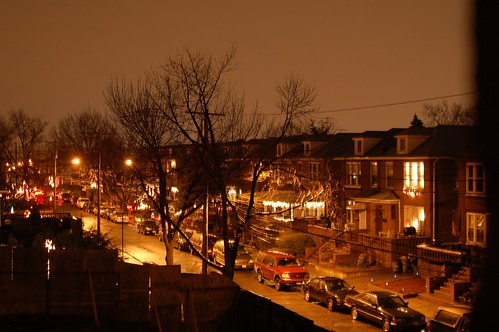
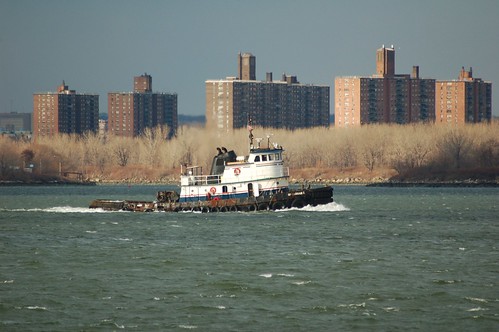

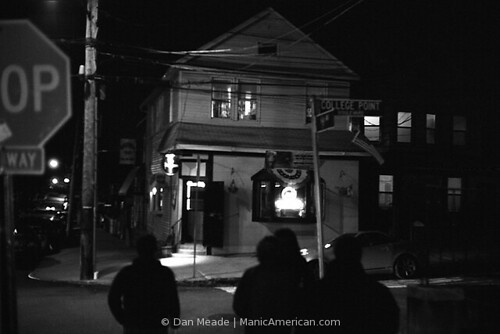
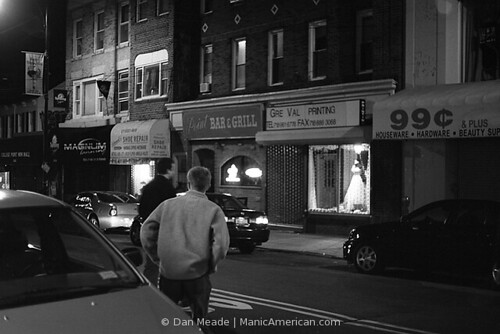

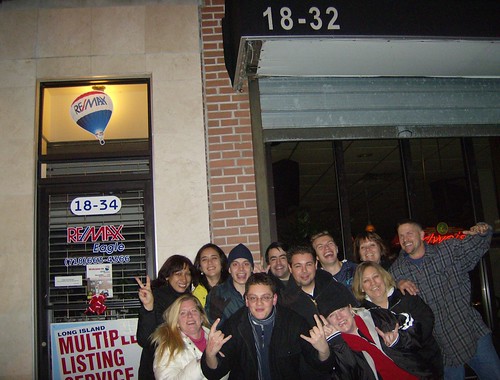
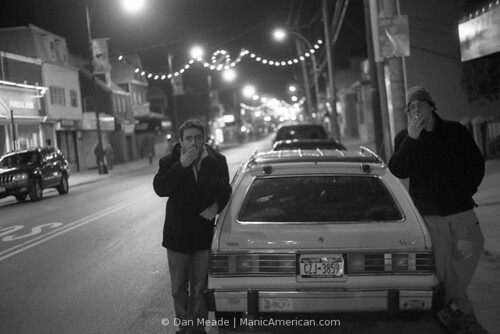
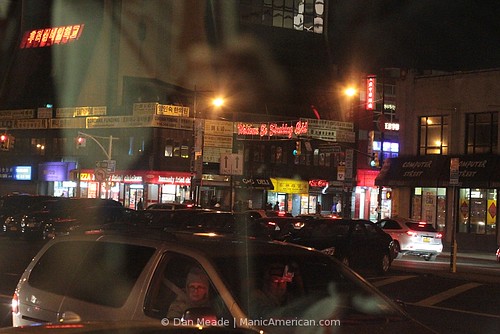

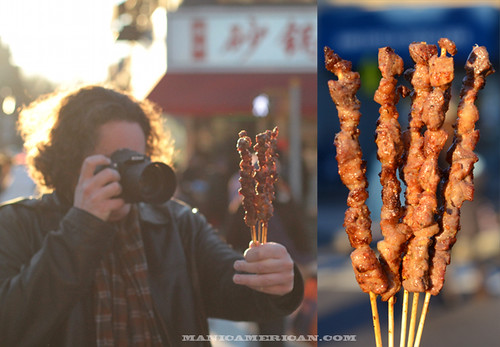
2 Comments
Comments are closed.